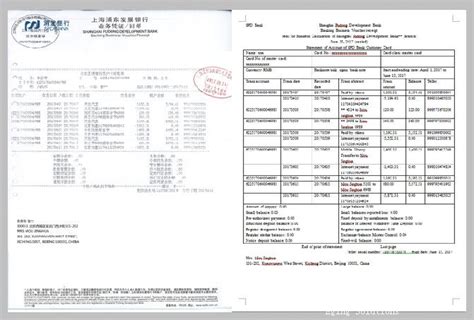Title: Translating Accounting Terminology from Chinese to English
Introduction
In the realm of accounting, accurate translation is paramount for clear communication and comprehension. Translating accounting terminology from Chinese to English requires not only linguistic proficiency but also a deep understanding of accounting principles in both languages. This article delves into the nuances of translating accounting terms, providing insights and guidelines for accurate and effective translation.
Understanding Accounting Terminology
Accounting terminology encompasses a wide array of terms, ranging from basic concepts to complex financial instruments. Before delving into translation, it's crucial to grasp the meanings and contexts of these terms in both languages. Chinese accounting terminologies often reflect the unique characteristics of the country's accounting standards and practices, while English terms may be influenced by international accounting standards such as Generally Accepted Accounting Principles (GAAP) or International Financial Reporting Standards (IFRS).
Challenges in Translation
Translating accounting terms poses several challenges due to linguistic, cultural, and conceptual differences between Chinese and English. Some terms may lack direct equivalents in the target language, requiring translators to convey the intended meaning accurately while ensuring alignment with established accounting conventions. Additionally, cultural nuances and regulatory differences may necessitate adaptation to maintain relevance and compliance in the target language.
Translation Strategies
1.
Literal Translation vs. Functional Equivalence
: While literal translation preserves the original wording, functional equivalence focuses on conveying the intended meaning in the target language. Striking a balance between the two is essential, prioritizing clarity and accuracy without sacrificing linguistic naturalness.
2.
Contextual Adaptation
: Accounting terms often derive their meaning from the broader context. Translators should consider the surrounding text and the specific use of the term to ensure coherence and consistency in translation.
3.
Consultation of Standards
: Referring to established accounting standards and guidelines can provide valuable insights into preferred translations and terminology usage. Harmonizing translations with recognized standards enhances clarity and facilitates crossborder communication.
4.
Glossary Development
: Developing a comprehensive glossary of translated accounting terms ensures consistency and facilitates future translations. This resource serves as a reference for translators and promotes uniformity in terminology usage across documents.
Commonly Translated Accounting Terms
1.
资产 (Zīchǎn) Assets
: Assets represent economic resources owned or controlled by an entity, encompassing tangible assets such as property and equipment, as well as intangible assets like patents and goodwill.
2.
负债 (Fùzhài) Liabilities
: Liabilities denote obligations or debts owed by an entity to external parties, including creditors, suppliers, and lenders. They encompass both current liabilities, payable within a year, and longterm liabilities, payable over an extended period.
3.
所有者权益 (Suǒyǒuzhě quányì) Owner's Equity
: Owner's equity, also known as shareholders' equity or net assets, represents the residual interest in the assets of an entity after deducting liabilities. It reflects the owners' claim on the company's assets.

4.
利润 (Lìrùn) Profit
: Profit refers to the financial gain obtained by an entity through its business activities, calculated by subtracting expenses from revenue. It serves as a key indicator of a company's financial performance.
5.
成本 (Chéngběn) Cost
: Cost denotes the amount of resources expended or liabilities incurred to acquire or produce goods and services. It includes direct costs directly attributable to a product or service and indirect costs allocated based on a systematic allocation method.
Conclusion
Translating accounting terminology from Chinese to English requires a nuanced approach that considers linguistic, cultural, and conceptual factors. By employing appropriate translation strategies and maintaining consistency with established standards, translators can ensure accurate and effective communication in the accounting domain. Developing a robust glossary of translated terms facilitates consistency and enhances the quality of financial reporting and analysis across language barriers.
文章已关闭评论!
